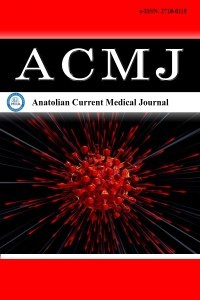1.
Fouad AF, Abbott PV, Tsilingaridis G, et al. International Association of Dental Traumatology guidelines for the management of traumatic dental injuries: 2. avulsion of permanent teeth.<em> Dent Traumatol</em>. 2020;36(4):331-342.
2.
Levin L, Day PF, Hicks L, et al. International association of dental traumatology guidelines for the management of traumatic dental injuries: general introduction. <em>Dent Traumatol</em>. 2020;36(4):309-313. doi:10.1111/edt.12574
3.
Díaz J, Bustos L, Herrera S, Sepulveda J. Knowledge of the management of paediatric dental traumas by non-dental professionals in emergency rooms in south araucanía, temuco, chile. <em>Dent Traumatol</em>. 2009;25(6):611-619. doi:10.1111/j.1600-9657.2009.00835.x
4.
Sarao SK, Rattai J, Levin L. Dental trauma among hockey players: preventive measures, compliance and injury types. <em>J Can Dent Assoc.</em> 2021;87:18. http://www.ncbi.nlm.nih.gov/pubmed/34343071
5.
Doğan Ö, Sönmez H, Doğan SSA. Comfort and wearability properties of custom-made and boil-and-bite mouthguards among basketball players: a randomized parallel arm clinical trial. <em>Dent Traumatol</em>. 2024;40(3):251-265. doi:10.1111/edt.12918
6.
Kuru R, Duruk G. Evaluation of Turkish emergency medicine physicians’ knowledge on emergency management of tooth avulsion. <em>Eur Oral Res.. </em>2023;57:49-59.
7.
Wolfer S, Mertens L, Hohenstein PK. Knowledge and skills of paramedics in handling patient with traumatic dental injuries. <em>Dtsch Zahnarzliche Zeitschrift</em>. 2022;4:149-157.
8.
Faul F, Erdfelder E, Buchner A, Lang AG. Statistical power analyses using G*Power 3.1: tests for correlation and regression analyses. <em>Behav Res Methods</em>. 2009;41(4):1149-1160. doi:10.3758/BRM.41.4.1149
9.
Aminu K, Kanmodi KK, Amzat J, Salami AA, Uwambaye P. School-based interventions on dental trauma: a scoping review of empirical evidence. <em>Children</em>. 2023;10(5):797. doi:10.3390/children10050797
10.
Fernanda Bello K. Elementary school teachers’ knowledge and attitudes toward emergency management of traumatic dental injuries. <em>Brazilian Oral Res.</em> 2023;37:073.
11.
van Vliet, Kirsten E. Knowledge about the emergency management of dental injuries among field hockey coaches. <em>Dent Traumatol</em>. 2022;2:526-531.
12.
Bogumil L. Assessment of paramedics’ knowledge and skills on dealing with dental injuries.<em> Med Rev.</em> 2016;1:287-299.
13.
Aras A, Dogan MS. Evaluating the levels of knowledge and attitudes of emergency medical technicians and paramedics toward traumatic dental injuries. <em>Niger J Clin Pract</em>. 2020;1:54-58.
14.
Shaul L. Physician and emergency medical technicians’ knowledge and experience regarding dental trauma. <em>Dent Traumatol</em>. 2006;22:124-126.
15.
Liran L. Dento-alveolar and maxillofacial injures-a survey of knowledge of the regimental aid providers in the Israeli army. <em>Dent Traumatol</em>. 2007;4:243-246.
16.
Qazi SR, Nasir KS. First-aid knowledge about tooth avulsion among dentists, doctors and lay people. <em>Dent Traumatol</em>. 2009;25(3):295-299.
17.
Abraham Y, Christy R, Gomez-Kunicki A, et al. Management of dental avulsion injuries: a survey of dental support staff in cairns, Australia. <em>Dent J</em>. 2020;9:1.
18.
Özveren N, Yıldırım S. Effectiveness of an educational cartoon animation on the knowledge of children about traumatic dental injuries. <em>Dent Traumatol</em>. 2022;38(6):512-518. doi:10.1111/edt.12784
19.
Joybell CC, Kumar MK, Ramraj B. Knowledge, awareness, and attitude among the employees in emergency ambulance services towards traumatic dental injuries.<em> J Fam Med Prim Care</em>. 2019;8(3):1043. doi:10.4103/jfmpc.jfmpc_343_348.
20.
Cruz-da-Silva BR, Perazzo MF, Neves É, Firmino RT, Granville-Garcia AF. Effect of an educational programme on the knowledge level among an emergency service medical team regarding tooth avulsion. <em>Oral Health Prev Dent.</em> 2016;14:259-266.
21.
Tewari N, Jonna I, Mathur VP, et al. Global status of knowledge for the prevention and emergency management of traumatic dental injuries among non-dental healthcare professionals: a systematic review and meta-analysis. <em>Injury</em>. 2021;52(8):2025-2037. doi:10.1016/j.injury.2021.06.006

